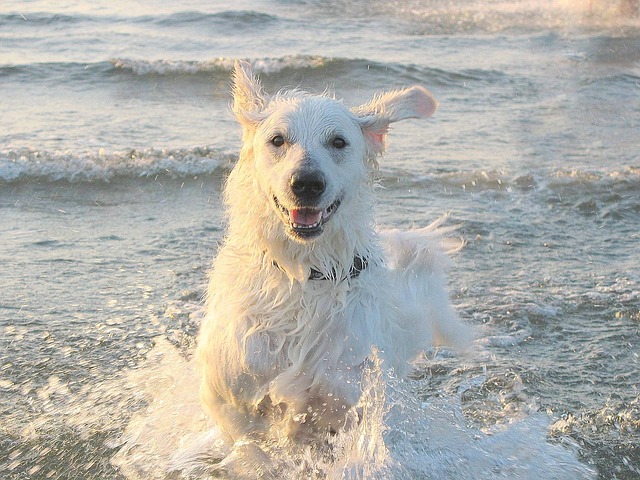


The Kuvasz is a large, strong, and protective breed originally from Hungary. Known for its impressive size and beautiful white coat, the Kuvasz was traditionally used as a livestock guardian dog, especially for protecting flocks of sheep. With their calm and loyal nature, Kuvaszs make excellent guard dogs and family companions, although they require firm training and early socialization. The breed is highly intelligent, independent, and alert, and it can be reserved with strangers while being fiercely protective of its family. The Kuvasz is best suited for active families with an experienced dog owner who can provide the structure and exercise the breed needs.
The Kuvasz is an ancient breed, believed to have been around for over 1,000 years. It was originally developed in Hungary as a working dog to protect livestock, particularly sheep, from predators. The breed's name, "Kuvasz," comes from the Turkish word "kavak," meaning "guard" or "protector." Over the centuries, the breed became known for its strength, courage, and ability to work independently in harsh environments. The Kuvasz was used by Hungarian nobility to protect their estates, and it played an important role during wartime as well. Although the breed nearly disappeared during the 20th century due to political and social changes, efforts in the late 1900s helped revitalize the breed. Today, the Kuvasz is a popular choice for those looking for a protective companion and family pet. The American Kennel Club (AKC) recognized the breed in 1935.
The Kuvasz is a large and powerful dog with a strong, muscular build. Males typically weigh between 100 and 115 pounds, while females range from 70 to 90 pounds. The breed stands between 26 and 30 inches tall at the shoulder. Its most distinctive feature is its beautiful, dense white coat, which is thick and weather-resistant, providing protection against harsh conditions. The coat is long and slightly wavy, though it is not as long as that of some other working breeds. The Kuvasz has a broad head with a slightly rounded skull, dark, almond-shaped eyes, and strong, erect ears. Its tail is thick at the base and tapers to a point, often carried in a gentle curve. The breed's overall appearance conveys strength, agility, and dignity.
The Kuvasz is known for its loyalty, intelligence, and protective instincts. As a livestock guardian breed, it is naturally wary of strangers and will protect its family or territory if it perceives a threat. While Kuvaszs are generally affectionate and gentle with their family members, they can be reserved and cautious around unfamiliar people. They are especially devoted to their owners and can form strong bonds with them. This breed is independent and confident, often thinking for itself, which can make training challenging. However, once a Kuvasz is properly socialized and trained, it is an excellent companion and guardian. They are best suited for experienced dog owners who understand the breed's needs for structure, socialization, and consistent training.
The Kuvasz is an active breed that requires regular exercise to stay healthy and content. As a working dog, it has high energy levels and stamina, which makes it well-suited to outdoor activities and tasks. A daily walk, jog, or hike is essential to keep them physically fit, and they will benefit from engaging in activities that allow them to use their natural instincts, such as obedience training or agility exercises. Kuvaszs also enjoy playing in a securely fenced yard, but they should always be under supervision, as they have a strong prey drive and may chase after small animals. Without enough physical and mental stimulation, the Kuvasz can become bored or frustrated, which may lead to undesirable behaviors. It is important to provide them with opportunities for both physical and mental exercise to keep them happy.
Training a Kuvasz can be a challenge due to its independent nature, but it is certainly possible with the right approach. The breed is intelligent and capable of learning quickly, but it is not always eager to please, so firm, consistent training is necessary. Positive reinforcement methods, such as treats and praise, work best, and harsh training methods should be avoided. Early socialization is essential for the Kuvasz to learn how to interact appropriately with people, other dogs, and different environments. Without proper socialization, the breed can become overly protective or territorial, which may lead to behavioral issues. It is important to expose a Kuvasz to different situations, animals, and people from a young age to help them become well-rounded adults. Consistent training, especially in obedience, is key to having a well-behaved and balanced Kuvasz.
The Kuvasz is generally a healthy breed, but like all dogs, it is susceptible to certain health conditions. Some of the most common health issues in the breed include hip dysplasia, elbow dysplasia, hypothyroidism, and progressive retinal atrophy (PRA). Regular veterinary checkups and a healthy diet can help maintain the Kuvasz’s overall health and catch potential problems early. The Kuvasz's dense coat requires regular grooming, especially during shedding seasons, to prevent matting and keep the coat in good condition. Brushing a few times a week is recommended to manage loose hair and maintain a shiny, healthy coat. Additionally, regular ear cleaning, nail trimming, and dental care are essential for the breed's overall well-being.
The average lifespan of a Kuvasz is around 10 to 12 years. With proper care, including a healthy diet, regular exercise, and routine veterinary visits, a Kuvasz can live a long and fulfilling life. Like many large breeds, the Kuvasz may be prone to joint issues as it ages, so it is important to maintain a healthy weight and provide joint supplements if necessary. As the breed ages, it is important to monitor their health closely and adapt their exercise and care routine to accommodate their changing needs.
© copyright Dog Compendium 2024 - 2025